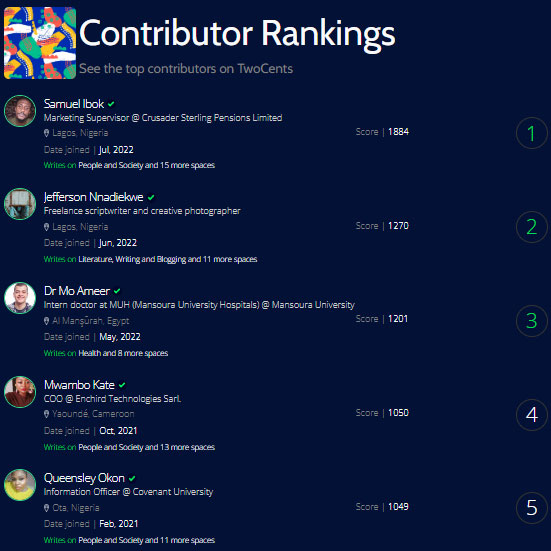Samuel Adisa
Student @ Akungba
The Quantum Leap Forward: How 2024’s Milestones Are Shaping Computing’s Future

<p>Quantum computing is no longer a distant dream confined to theoretical physics labs; it’s rapidly becoming a transformative technology with the potential to revolutionize industries from cryptography to drug discovery. Recent breakthroughs have accelerated the race toward practical, scalable quantum computers, pushing the boundaries of what’s possible with computation. Below, I’ll outline some of the most significant advancements in quantum computing, focusing on developments from the past couple of years, their implications, and the challenges that remain.
</p><p>Quantum Milestones </p><p>Google’s Willow Chip </p><p>1. In December 2024, Google unveiled its Willow quantum chip, a major milestone in quantum computing. Willow demonstrated the ability to perform a computational task in under five minutes that would take a classical supercomputer an estimated 10 septillion years—far longer than the age of the universe. This achievement builds on Google’s earlier claim of quantum supremacy in 2019 with its 54-qubit Sycamore processor, which solved a problem in 200 seconds that would have taken a supercomputer 10,000 years.
</p><p>2. Microsoft’s Majorana 1 Chip and Topological Qubits</p><p>Microsoft announced a breakthrough in February 2025 with its Majorana 1 chip, which uses topological qubits based on Majorana particles. Unlike traditional qubits, these are inherently more stable, reducing the need for extensive error correction by building fault tolerance directly into the hardware. Microsoft’s approach involves a novel material called a topoconductor, created by designing and fabricating a materials stack atom by atom using indium arsenide and aluminum. This innovation offers a path to scaling quantum systems to a million qubits, a critical threshold for tackling complex industrial and societal problems like catalyst design for sustainable agriculture or drug development.
</p><p>
</p><p>3. IBM’s Condor and Heron Processors</p><p>IBM has been a pioneer in quantum computing, and its recent advancements solidify its position. In 2023, IBM unveiled the Condor processor with 1,121 superconducting qubits, breaking the 1,000-qubit barrier. This processor achieves a 50% increase in qubit density and uses over a mile of cryogenic wiring, addressing scalability challenges. In parallel, IBM introduced the Quantum Heron processor with 133 fixed-frequency qubits, offering three to five times better performance than its 127-qubit Eagle processor, with virtually no crosstalk. IBM’s focus on quantum utility—making quantum computers practical for real-world applications—has led to accessible quantum hardware through IBM Cloud since 2016 and the Quantum System One, the first commercially available circuit-based quantum computer in 2019.
</p><p>
</p><p>4. Quantum Networking and Cloud Accessibility</p><p>Quantum computing is becoming more accessible through cloud-based platforms. In 2024, IBM, Google, and Amazon expanded their quantum cloud services, allowing researchers and businesses to experiment without building their own quantum hardware. A notable breakthrough came from AWS and Harvard, who developed a new method for packaging optical fibers to improve quantum networking. This method connects tapered optical fibers with quantum repeaters, enabling stable light transfer over long distances at cryogenic temperatures, compatible with high-speed telecom networks. Additionally, Oxford University researchers achieved a breakthrough in “blind quantum computing,” ensuring secure and private access to cloud-based quantum systems.
</p><p>
</p><p>5. Room-Temperature Quantum Coherence</p><p>One of the biggest hurdles for quantum computing is the need for ultra-low temperatures to maintain qubit coherence. A Japanese team at Kyushu University made a significant advance in 2024 by achieving room-temperature quantum coherence using pentacene molecules in a metal-organic framework (MOF). By restricting electron movement, the MOF allowed qubits to maintain their quantum state for 100 nanoseconds—brief but a critical proof-of-concept for reducing the need for expensive cryogenic systems.
</p><p>
</p><p><br/></p><p>Implications and Applications
</p><p>1. Advances in quantum algorithms, like those inspired by Regev’s work, could break traditional encryption methods, necessitating quantum-resistant cryptography such as lattice-based systems.
</p><p>
</p><p>
</p><p>2. Quantum computers can simulate molecular interactions at unprecedented scales, potentially revolutionizing pharmaceutical development and materials design for batteries, fertilizers, and catalysts.
</p><p>
</p><p>3. Quantum algorithms could optimize complex problems in portfolio management, supply chain logistics, and risk analysis, with projected economic impacts of up to $1.3 trillion by 2035.
</p><p>4. Countries leading in quantum computing will gain advantages in cybersecurity and defense, driving global competition, with China investing over $15.2 billion in quantum research.
</p><p><br/></p><p>Challenges </p><p>1. While error correction has improved, achieving fault-tolerant quantum computing requires further reductions in error rates to ensure reliability for complex computations.
</p><p>
</p><p>2. Scaling to millions of qubits while maintaining coherence and low error rates is a massive engineering challenge.
</p><p>
</p><p>3. Current quantum systems are expensive and require specialized environments. Room-temperature breakthroughs are promising but not yet practical for large-scale systems.
</p><p><br/></p><p>The quantum computing landscape is evolving rapidly, with 2024 and 2025 marking pivotal years. Google’s Willow, Microsoft’s Majorana 1, and IBM’s Condor and Heron processors demonstrate that the field is moving from theoretical milestones to practical applications. The shift to logical qubits, advanced error correction, and accessible cloud platforms is making quantum computing more viable for real-world use. However, the timeline for widespread commercial adoption remains uncertain—some experts, like Nvidia’s Jensen Huang, estimate 15–30 years for “very useful” quantum computers, while others believe breakthroughs like Willow and Majorana 1 could accelerate this timeline.
</p><p>
</p><p>
</p><p>The challenge now is to translate these breakthroughs into practical tools that deliver tangible value, while addressing ethical concerns like the potential to disrupt encryption systems.
</p><p>
In summary, quantum computing is at a tipping point, with recent advancements in error correction, qubit stability, and accessibility bringing us closer to a future where quantum computers solve problems beyond the reach of classical systems. The next few years will be critical in determining how quickly this potential becomes reality.
</p><p>
</p><p><br/></p><p>
</p><p>
</p><p>
</p><p>
</p>
Other insights from Samuel Adisa
Referral Earning
Points-to-Coupons
Insights for you.







 113
113



































































Comments